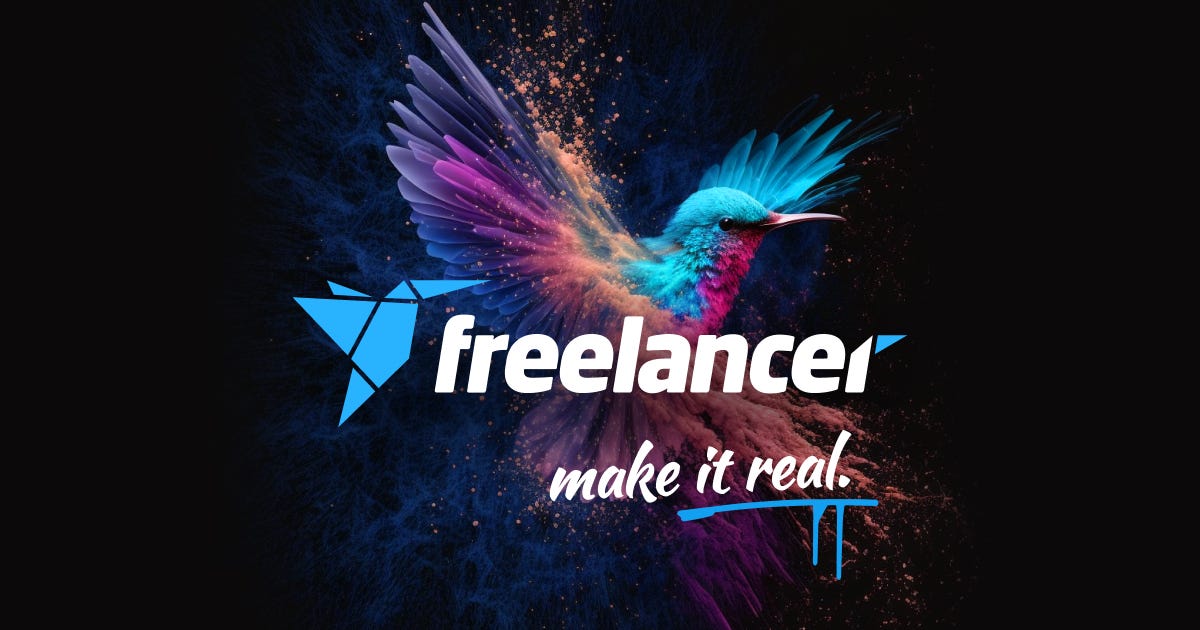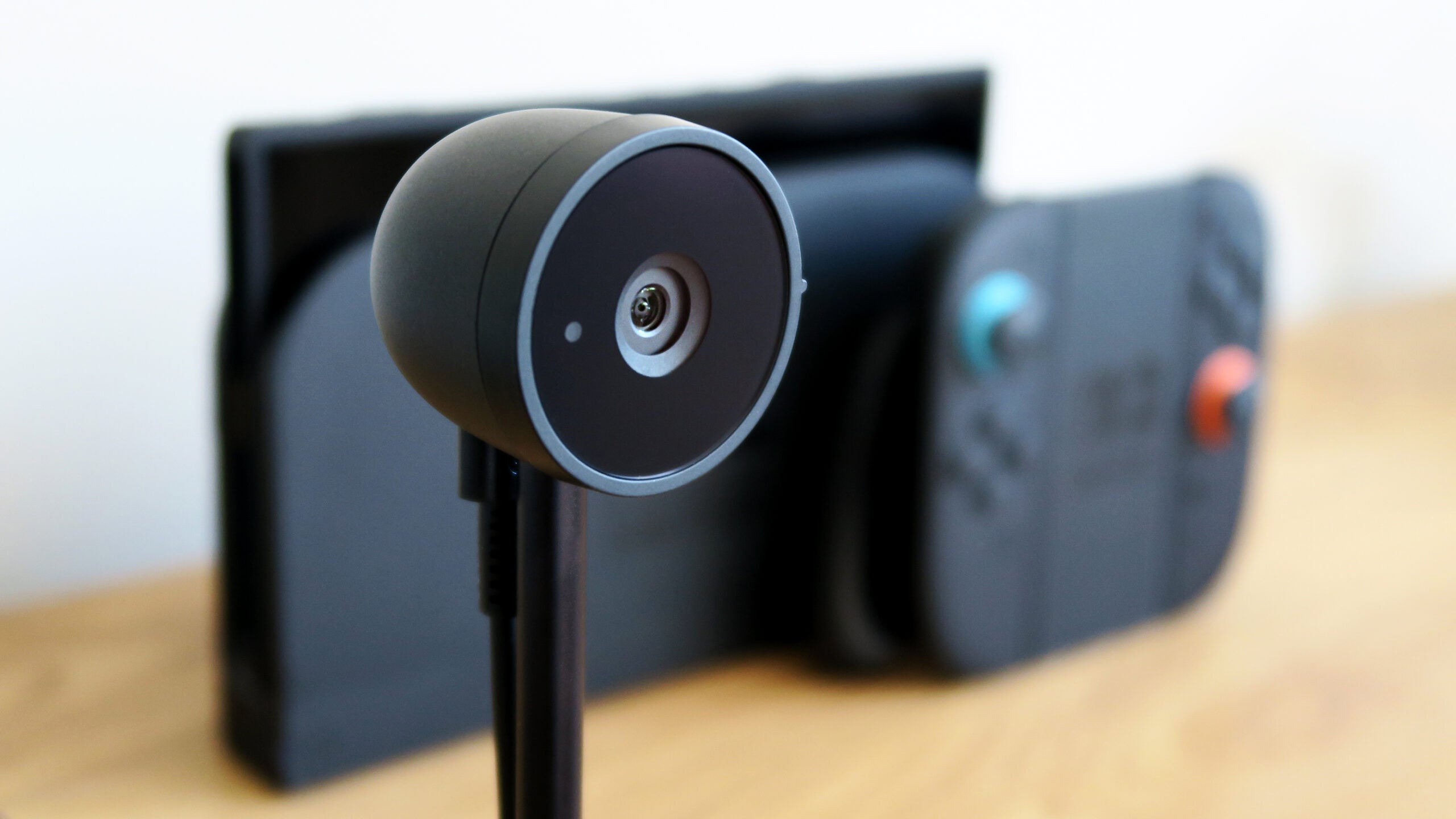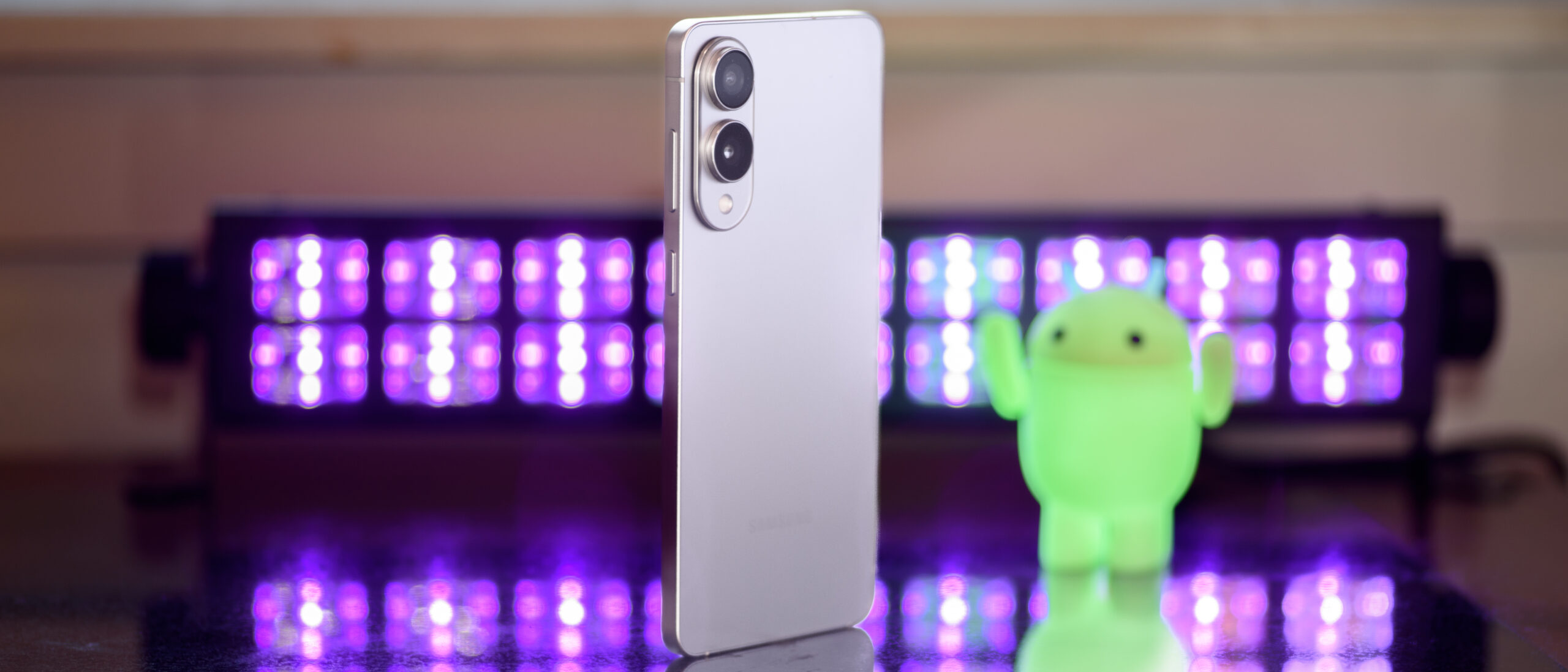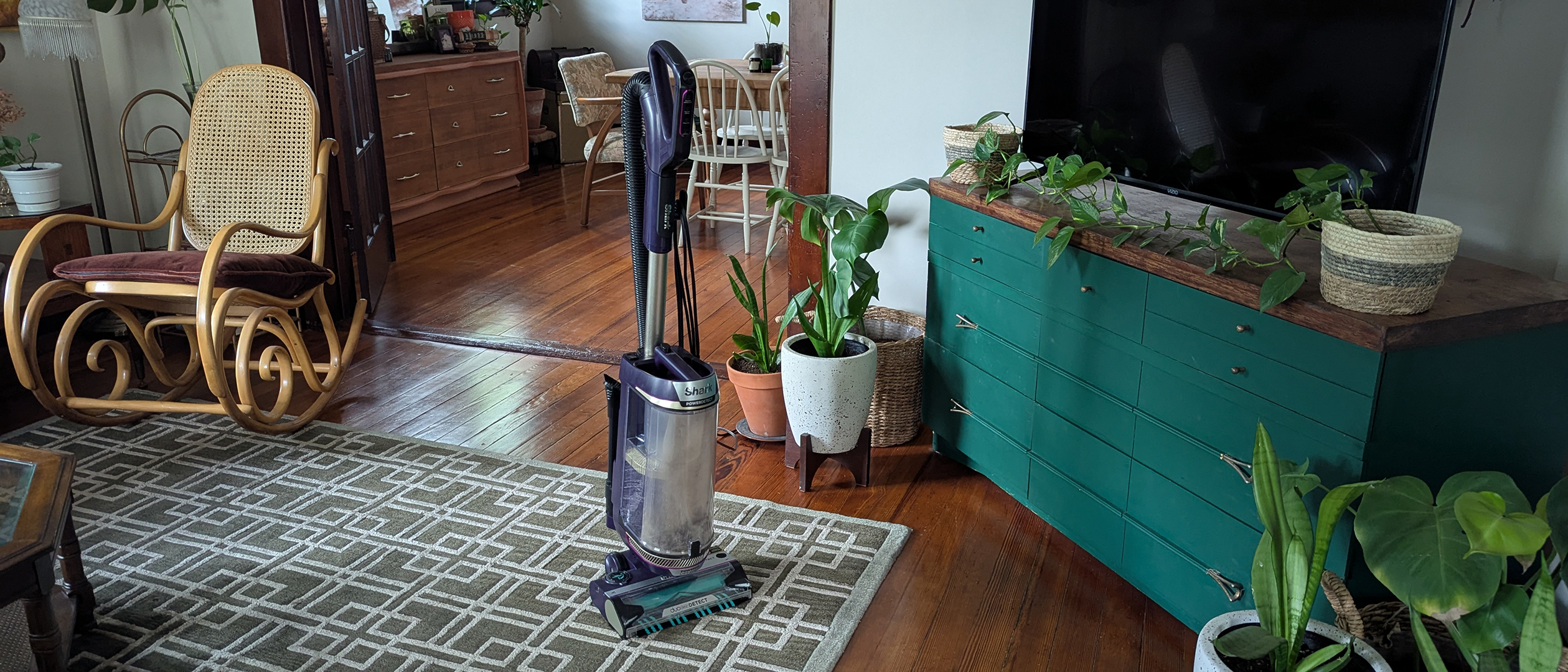Verdict
You’re paying a premium for that Nintendo polish, as the internals and functionality aren’t particularly game-changing. Nonetheless, this is a stylish, nicely-built camera that works well with the Switch 2 and even better with your computer.
-
High quality fit and finish -
Sturdy base -
Easy to use
-
Image quality could be better -
No alternate mounting options -
No microphone
Key Features
-
Review Price: £49.99 -
Integrated privacy shutter
A quick twist and you can guarantee that the Nintendo Switch 2 Camera can’t see anything. When closed, it also relays a black image with a strikethrough symbol, so you know the lens is fully covered. -
USB plug-and-play
While made with the Switch 2 in mind, this is ultimately just a Nintendo-branded USB-compatible camera; meaning it works with Mac and PC out the box too. -
Optimised for faces
The Nintendo Switch 2 Camera features an ultra-wide lens with lens correction to prevent distortion, as well as exposing for faces and employing noise reduction in low light.
Introduction
Nintendo really, really wants you to use GameChat. Not only has the feature earned a new dedicated hardware button across all three official Nintendo Switch 2-compatible launch controllers, but the company has also made the service free-to-use until 2026.
As for the question ‘what is GameChat?’, it covers a suite of features: screen-sharing – so you can share gameplay with your friends (and see theirs), voice chat and, most importantly for this review, video chat.
While those unboxing a new Nintendo Switch 2 will find the console, the upgraded Joy-Cons, the dock, and the power adapter in-box, one thing that isn’t included is a camera. There isn’t one built into the bezel of the console itself either (like you’d find on the best tablets). Instead, Nintendo is touting its own additional £49.99 / $54.99 accessory, for those who want the complete Switch 2 experience from the get-go.
While in a vacuum, that price tag isn’t heinous (Sony’s official HD Camera for PS5 costs about as much new), it’s a big ask for newbie Switch 2 owners or potential buyers; who’ve already collectively shown to be acutely aware of the cost increase attached to this generation of Nintendo hardware and software.
There’s also the fact that GameChat’s video functionality isn’t exclusive to the official Nintendo Switch 2 Camera either. According to Nintendo, practically any conventional USB web camera should do.
So with all this in mind, should you fork out cash to Nintendo directly for first-party polish, paired to plug-and-play convenience, are you better off digging out that old Logitech from lockdown, or does forgoing the video aspect of the GameChat experience completely make the most sense?
Design and Features
- Metal base and stand
- Head tilts through 35-degrees
- Integrated privacy shutter
Two things stuck out to me when first taking the official Nintendo Switch 2 Camera out of the box: it’s smaller than the company’s official press materials would have you believe, and it feels more premium than expected too; primarily thanks to the strong, sturdy metal base and stand.
The camera itself is set within a well-finished black dome that sports what looks like the same high-quality textured plastic as found on the new Nintendo Switch 2 Pro Controller; nice from a consistency standpoint.
Its matte black appearance is only really broken up by the inclusion of a glossy Switch 2 logo, face-up on the front of the base, but at most angles the whole unit should remain pretty clean and unobtrusive.
When you set the camera down, the silicone bottom ensures it won’t slide around, even on slick polished wood or glass surfaces, while the weight of the metal base – relative to the predominantly plastic camera housing up top – means the whole thing remains bottom-heavy and, as such, won’t easily tip over.
There’s a 1.5m black USB-C to C cable included in the box, which connects vertically into the base of the camera shroud, making for a pretty seamless look; helped by the fact that the wire can then be trained down the stem of the stand – thanks to an integrated rubberised clip – to trail out of sight, at the back. A braided cable would have better matched the premium feel served up by the camera itself, but that’s perhaps a bit of a reach, considering the price point.
The head of the camera can also be tilted through 35-degrees (25 up from horizontal, 10 down), meaning it’s easy enough to place below your eyeline on a table or above on a shelf, and still get a good angle; ensuring you and your friends remain comfortably in-frame.
The fact that it’s 17cm tall is also intentional on Nintendo’s part. When placed behind a docked Switch 2, it’s high enough to clear the console, whilst still being able to get a clear shot without towering over everything.


There’s no motorisation to speak of, so don’t expect the camera to be able to track you around a room (like an Insta360 Link 2). Additionally, while it can tilt up and down, if you need to turn it left or right, you have to lift the whole thing up and set it back down.


Although small and lightweight enough (111 grams) to travel with, Nintendo has opted for a design which implies that it’s only ever intended to be used on a flat surface and generally not moved around. There’s no way to natively mount the camera to the Switch 2 itself – should you want a more closeup angle or portable experience – when playing in tabletop or handheld modes, which is a shame.
This is something which only third-party cameras offer. Those whose designs are purpose-built to grip to the top bezel of a computer monitor or – in the case of Hori’s officially licensed Piranha Plant camera – plug directly into the top-mounted USB-C port on the Switch 2.
As none of the accessory’s electronics reside in that metal base, there’s a world in which Nintendo could have made the camera module detachable from its stand and included an alternative mount to attach directly to the console for handheld play. But, alas, that isn’t what’s on offer here.
Beyond being able to tilt the camera’s head, the only other moving part of the official Nintendo Switch 2 Camera is the ring surrounding the lens, which when twisted engages a privacy cover. The cover itself is light grey, making it easy to see whether the lens is covered or not, at distance.
The ring uses a torsion spring to minimise the chance of the privacy cover only partially covering the lens too, but the mechanism does still run the risk of sticking part way, if you’re not intentional with it. Still, I’d rather it was there than not.
Performance and Video Quality
- Up to 1080p at 30fps
- Auto-exposure
- Ultra-wide 110-degree FoV
As Nintendo hasn’t gone with proprietary hardware, the Switch 2 Camera can be evaluated not only as an accessory for the company’s hot new console, but as a humble webcam for use with your computer too.
If you’re considering picking this up explicitly for use with the Switch 2, it’s an obvious choice, if only because it’s what Nintendo thinks best suits the use case.


Despite a native 1080p resolution, don’t expect the crispest visuals when using it in conjunction with compatible Switch 2 games; like Super Mario Party Jamboree (more specifically, the Switch 2-exclusive extras of Jamboree TV) and Mario Kart World.
These games rely on players statically cropping in on their faces (face tracking is available in GameChat but not in the likes of Mario Kart World, confusingly), before getting stuck in with some local multiplayer. The result is a pretty pixelated representation of each player’s face, with the camera working hard to retain key differentiating details.
In experiences like GameChat, there’s also the option to hide your background, at which point the Switch 2 tries its best to separate you from whatever’s behind you, as if you were sat in front of a chroma-keyed green screen. With the Switch 2 Camera, the quality of the cut-out hinges on how even your lighting and how clean your background is; a loaded bookshelf will result in more artifacting than a blank wall, for example.
Having dived into the infamous Switch 2 Welcome Tour (Nintendo kindly supplied me with a copy), time has been clearly spent optimising for these experiences; with an ultra-wide 110-degree field of view which ensures the image is wide enough to capture a full sofa’s worth of players (you have the option to zoom in GameChat, however). Equally, Nintendo compromised on centre-frame clarity in order to correct lens distortion at the edges of the frame.
Testing in both a naturally-lit room on a Summer’s day and the same room, with warm artificial lighting after sunset, I saw usable but flat image quality in both scenarios. That said, the existing pixelation from cropping, paired to the dimmer evening lighting really highlights the limitations of the sensor Nintendo has used.
The camera automatically exposes for faces and uses noise reduction in low-light to retain as much facial detail as possible, even at the expense of frame rate. While you can make out who’s who in darker rooms, I wouldn’t say the results are by any stretch ‘impressive’, although I’m not going to argue with the processing’s decision to whiten my teeth, even if, in reality, picking up whitening strips remains on my to-do list.


To get the best bang for your buck, it’s also worth considering whether the Switch 2 Camera holds any value as a conventional webcam, and I’d say it does.
Its expansive field of view means it’s better suited to conferencing and group calls, compared to most of the best webcams, which use narrower focal lengths. There’s also a world in which streamers put it to use as a way to more easily include a stylish backdrop or room setup in-frame. That, or as a secondary angle.
As there’s no official Mac/PC client for the Switch 2 Camera, any customisation needs to be done with third-party software.
Nintendo Switch 2 Camera
MacBook Pro camera
Besides the baked-in white balancing, freeware like OBS could ‘fix’ the Switch 2 Camera’s field-of-view for more conventional use, as well as letting you colour correct – as the camera’s default output is a little cool in practice. Thankfully clarity is significantly better on Mac/PC, with a true 1080p image on display.
One other quirk (which Nintendo could theoretically patch, but again, don’t hold your breath) is that connecting the Switch 2 Camera to a computer using the included USB-C to C cable (or any C to C cable I had to hand) resulted in a blank image. Connecting the camera using a USB-C to A cable into a compatible port solved the issue. It’s a quirk that other users have encountered online too, although I can’t say as to why it happens or whether it’s every Switch 2 Camera sold.
Should you buy it?
Buy if you want a premium-looking fuss-free camera for your Switch 2/PC
It’s a perfectly serviceable option across Switch 2 experiences like GameChat and within games like Mario Kart World, as well as a webcam for video conferencing or streaming on your PC.
Don’t buy it if want a feature-rich webcam experience
If you need good low light performance or a native Mac/PC client with additional functionality, like face tracking, the official Switch 2 Camera is too simplistic.
Final Thoughts
It’s a case of the right tool for the job. If you’re without a camera and predominantly plan on using video chat on your Switch 2 whilst docked at home, it’s a solid offering with a consistent design and comparable build quality to the console itself; not to mention other new accessories, such as the Switch 2 Pro Controller.
It also works well as a webcam, provided you’re happy with the stand design (i.e. you can’t mount it on a screen). In fact, design is perhaps its defining feature. If you’re not precious about owning the official Switch 2 Camera, or aren’t after anything with as premium build quality as this, there are a run of alternatives that can match or beat the Switch 2 Camera for image quality, features and price.
The incredibly popular Logitech C920 is a similarly-priced and similarly-capable 1080p camera that’s been proven to be Switch 2-compatible, but allows for bezel mounting and boasts autofocus. Similarly, the more affordable Razer Kiyo would make for a great camera for handheld gameplay, thanks to its integrated ring light.
How We Test
We use every webcam we test as our main device for video conferencing (and in this case GameChat and gameplay) throughout the review period, while also running its proprietary software through its paces.
We also check the device’s compatibility with more widely available software for professionals and content creators.
- Tested over a period of seven days
- Checked the capture quality with real-world testing
- Tested all available software and features
FAQs
No, features like GameChat use the Switch 2’s inbuilt microphone, while use on a Mac/PC relies on your computer’s microphone for audio input.
Theoretically, it should work simply by connecting the included USB-C to C cable, however, in testing it required a USB-C to A cable to be fully operational at the time of review.
Full Specs
| Nintendo Switch 2 Camera Review |
|---|











